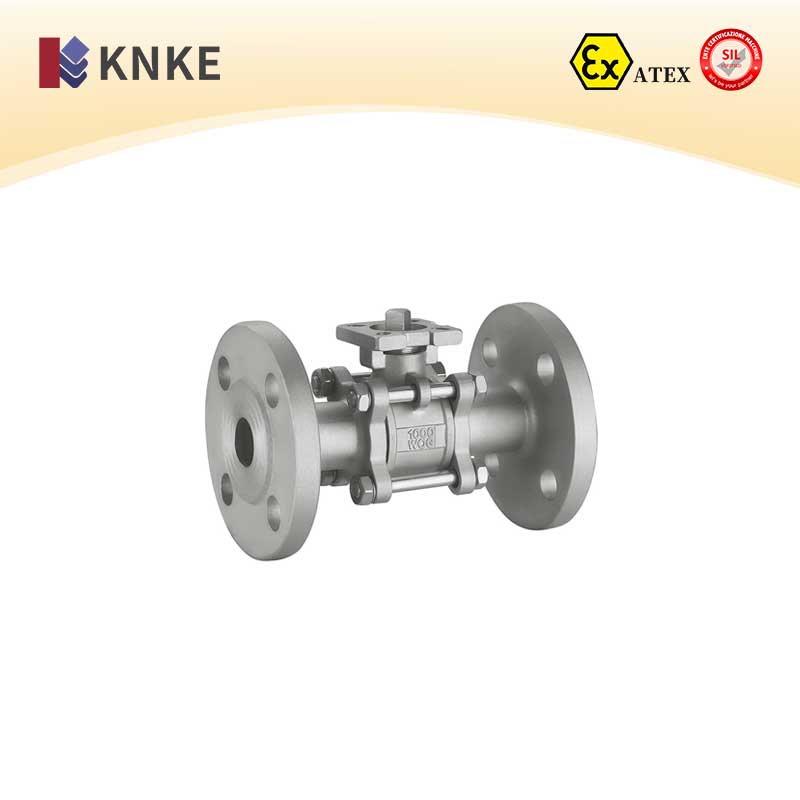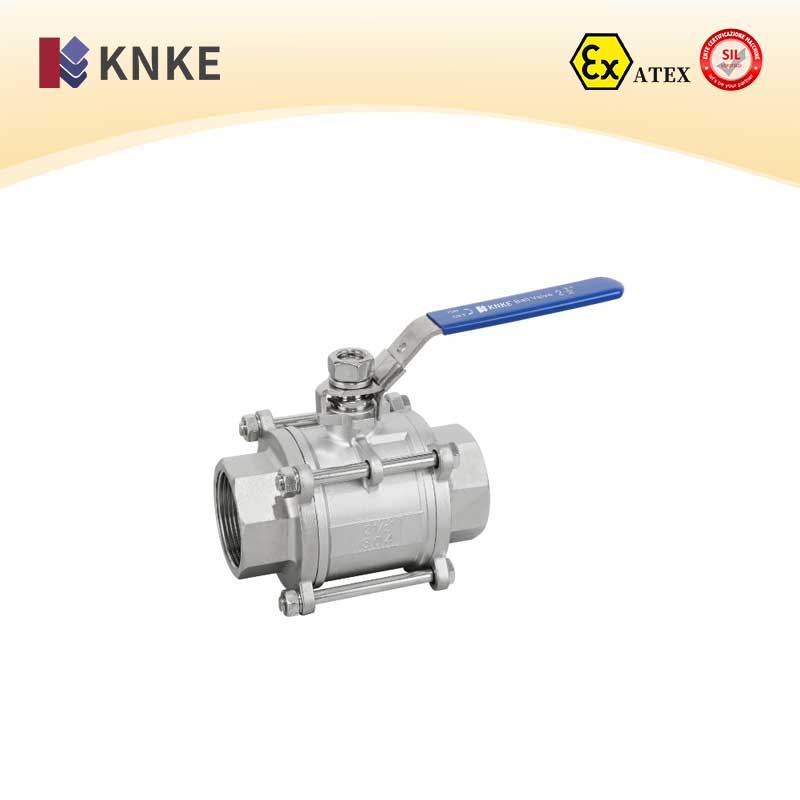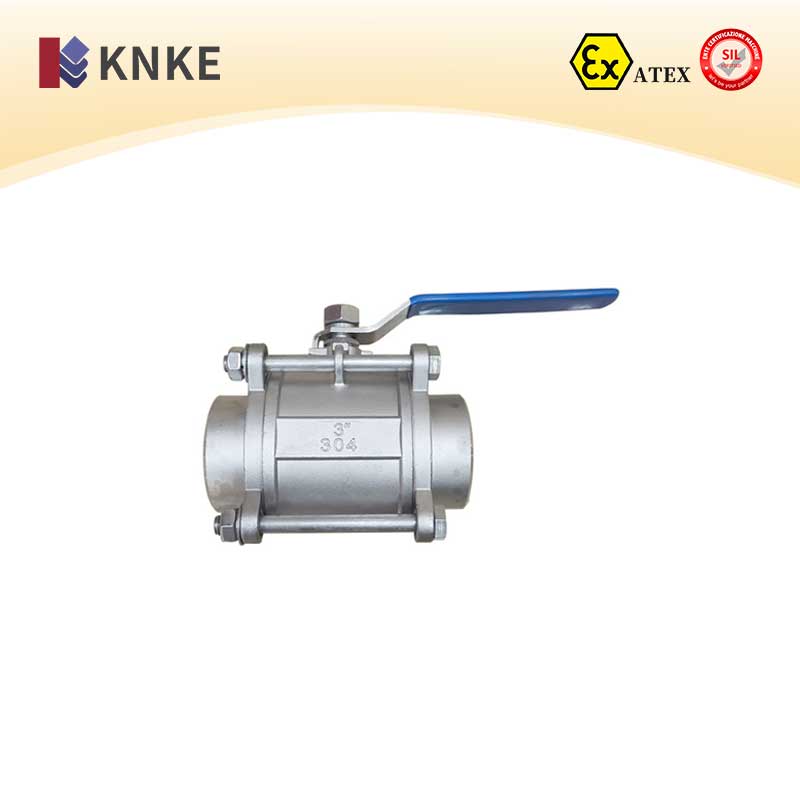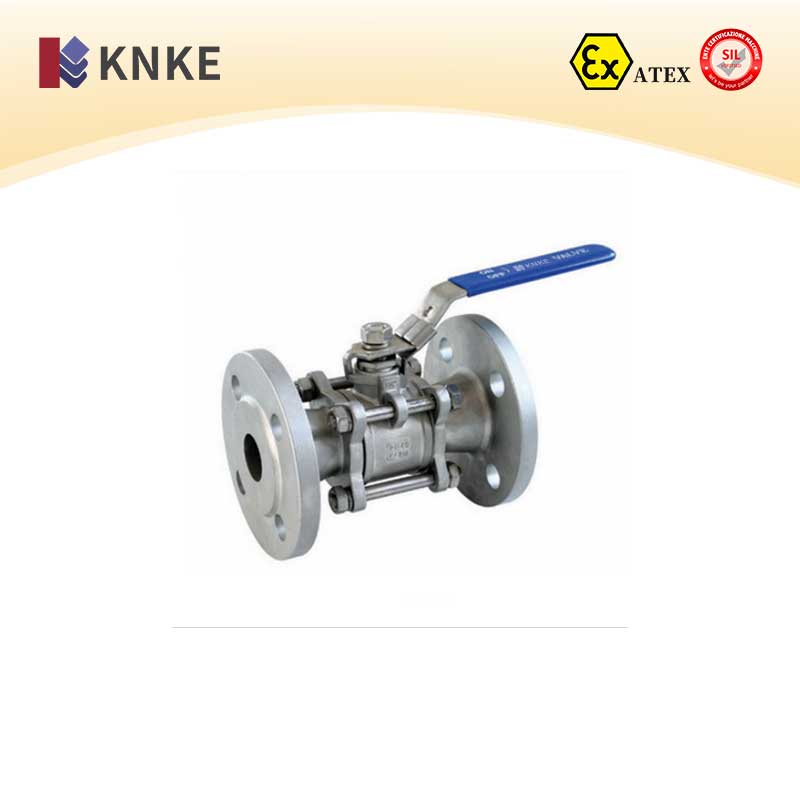Description
Overview of KNKE Three-Piece Ball Valve
KNKE Three-Piece Ball Valve are designed with a modular three-part construction, making them easy to install, maintain, and replace when needed. By rotating the valve 90° with minimal torque, it creates a tight seal and allows for smooth, efficient flow. The straight-through flow path minimizes resistance, ensuring optimal performance. Traditionally, ball valves are used for on/off control, but KNKE has enhanced the design to allow for throttling and flow regulation as well. The compact structure, combined with ease of operation and maintenance, makes these valves suitable for a wide variety of media, including water, oil, gas, and more aggressive substances such as oxygen, hydrogen peroxide, methane, and ethylene. Therefore, they are ideal for numerous industrial applications.
KNKE Three-Piece Ball Valve Selection Parameters
| Parameter | Specification |
|---|---|
| Product Name | Three-Piece Ball Valve |
| Nominal Diameter | DN6 to DN100 |
| Structure Type | Spherical |
| Nominal Pressure | 1.6MPa to 6.4MPa (W.O.G) |
| Connection Type | Internal Thread, External Thread, Socket Weld, Union, Quick Connect, Butt Weld |
| Operating Temperature | -20°C to 232°C (up to 350°C for some models) |
| Actuation Mode | Manual, Electric, Pneumatic |
| Body Material | Cast Steel, Stainless Steel |
| Standards | GB, DIN, API, ANSI |
| Applicable Media | Water, Oil, Gas, Corrosive Liquids |
KNKE Three-Piece Ball Valve Description
KNKE Three-Piece Ball Valve are expertly engineered to control or shut off the flow of media in pipelines. The three-part construction makes them simple to disassemble and maintain, while advanced silicone sol-gel technology enhances their durability. Additionally, the resilient sealing structure ensures low-torque operation, making these valves easy to handle while still providing excellent sealing performance. The valve stem is designed with a back-seal structure that prevents stem blow-out, ensuring enhanced safety. Furthermore, these valves can handle various media, such as water, steam, oil, and corrosive substances like nitric acid and acetic acid. As a result, they are highly adaptable and reliable for multiple industries.
Key Features of KNKE Three-Piece Ball Valve
- Frictionless Operation: By eliminating friction between the sealing surfaces, KNKE Three-Piece Ball Valve prevent wear, which significantly extends their lifespan.
- Top-Mounted Design: This structure allows for straightforward maintenance and inspection without removing the valve from the pipeline. Consequently, downtime is minimized, leading to cost savings.
- Single Seat Design: This feature eliminates risks associated with abnormal pressure build-up within the valve body.
- Low Torque Requirement: The specially engineered valve stem requires only a small handle for easy valve operation, reducing operator fatigue.
- Wedge-Seal Structure: The valve stem exerts mechanical force that presses the ball against the seat, ensuring a reliable seal. This design maintains effective sealing performance regardless of pressure fluctuations in the pipeline.
- Self-Cleaning Sealing Surface: As the ball moves away from the seat, the flow of fluid clears the sealing surface, which helps remove any accumulated debris, thereby enhancing the valve’s longevity.
KNKE Three-Piece Ball Valve Connection Methods
Flange Connection
Flange connections are commonly used and can be tailored to suit various applications:
- Smooth Surface: Suitable for low-pressure applications, this design is simple to install.
- Raised Face: This design is compatible with higher pressure systems and works well with medium-hard gaskets.
- Tongue and Groove: This provides excellent sealing, particularly for corrosive media.
- Trapezoidal Groove: Ideal for high-pressure (≥64 kg/cm²) or high-temperature applications, this connection uses oval metal rings.
- Lens Type: Lens-shaped metal gaskets are perfect for handling high pressures (≥100 kg/cm²) or high temperatures.
- O-Ring Type: This advanced design uses rubber O-rings, offering superior sealing performance.
Threaded Connection
Threaded connections are generally used for smaller valves and come in two forms:
- Direct Sealing: The internal and external threads directly form the seal. PTFE tape or other sealing materials can be used to improve the seal’s effectiveness.
- Indirect Sealing: The threads tighten and compress a gasket between the two surfaces, creating a secure seal.
Key Technical Specifications of KNKE Three-Piece Ball Valve
| Performance Indicator | Specification |
|---|---|
| Leak Rate | ≤1.3×10⁻⁴ Pa.L/S |
| Temperature Range | -20°C to +232°C (up to 350°C for some models) |
| Application Scope | Water, Oil, Gas, Corrosive Liquids |
| Flange Connection Types | Loose Flange, Welded Flange, Quick Connect |
| Operating Pressure Range | 1.6MPa to 6.4MPa (W.O.G) |
| Threaded Connection Pressure | 1.6MPa to 6.4MPa (W.O.G) |
KNKE Three-Piece Ball Valve are highly regarded for their reliability, ensuring consistent performance in both standard and challenging environments. Their robust sealing capability makes them an excellent choice for many industries, guaranteeing long-lasting, leak-free service.
Frequently Asked Questions
1. What is the maximum pressure KNKE Three-Piece Ball Valve can handle?
These valves can safely operate at pressures up to 6.4MPa (W.O.G), suitable for a wide range of systems.
2. Can KNKE Three-Piece Ball Valve handle high temperatures?
Yes, they can withstand temperatures as high as 350°C, depending on the seal material used.
3. What makes KNKE Three-Piece Ball Valve easier to maintain?
The top-mounted design allows for easy inspection and maintenance, reducing downtime and cutting operational costs.
4. Are KNKE Three-Piece Ball Valve customizable?
Absolutely. KNKE offers customizable solutions, including specialized materials, sizes, and pressure ratings to meet your specific needs.
5. How do KNKE ball valves ensure reliable sealing?
The wedge-seal structure, combined with low-torque operation, guarantees a tight, secure seal even under fluctuating pressures. Additionally, the self-cleaning sealing surface prevents buildup and ensures the valve remains in excellent working condition.





